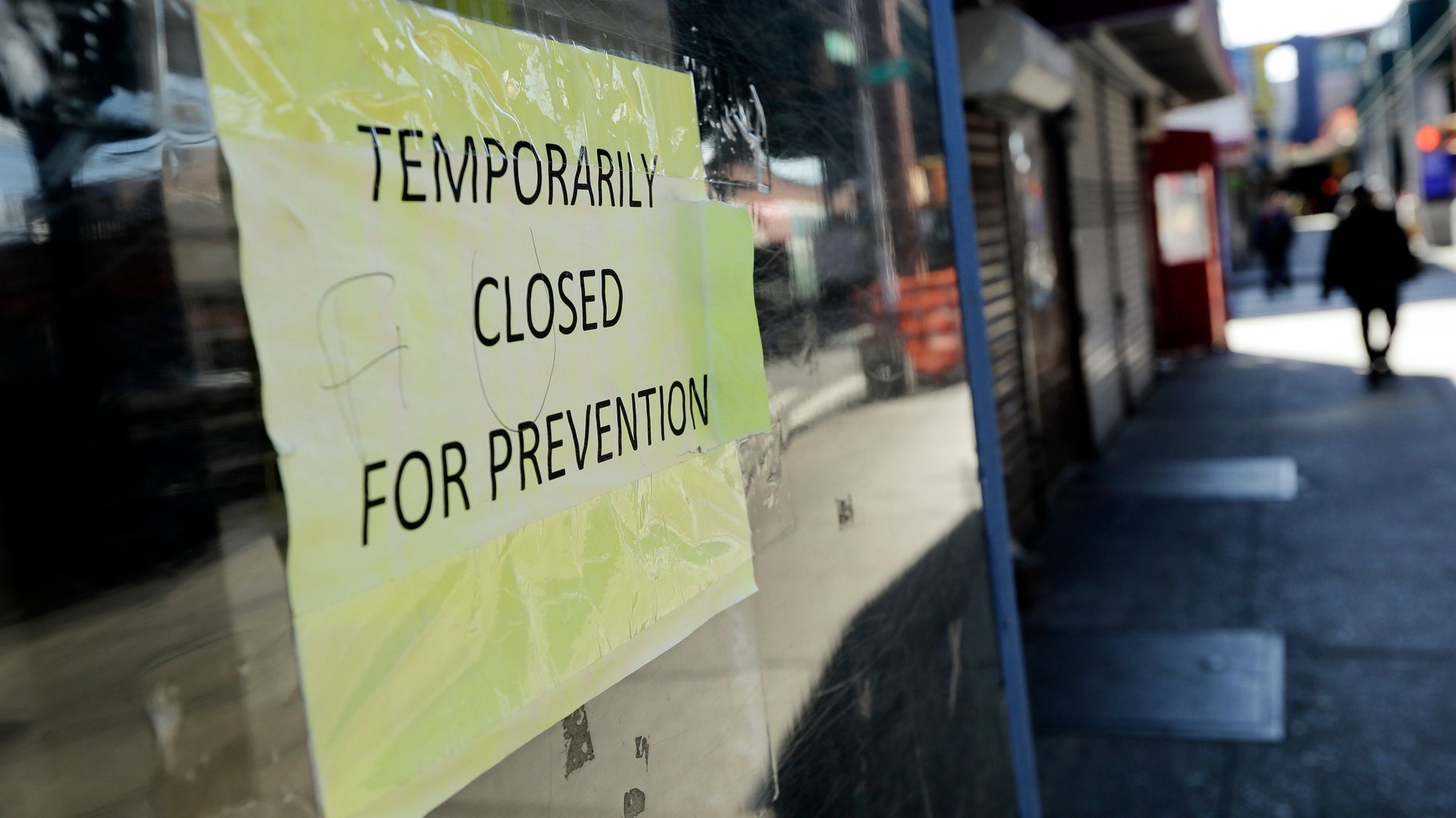How much money will the US need to cover small-business wages?
The US government has launched a program to effectively cover eight weeks of essential costs—particularly, payroll—for small businesses that get hurt financially during the pandemic.


The US government has launched a program to effectively cover eight weeks of essential costs—particularly, payroll—for small businesses that get hurt financially during the pandemic.
How much money will it take?
We analyzed US economic statistics to develop a ballpark estimate.
The Paycheck Protection Program is designed to apply to companies with fewer than 500 employees, alongside gig workers and the self-employed. So we took data from the US Bureau of Labor Statistics on the number of American workers employed at firms of different sizes—in the first quarter of 2019, 52.4% of American workers were employed at firms with fewer than 500 employees—and matched them to the average weekly wage of workers at establishments in seven size categories, starting at a range of one to five employees and working up to a range of 250 to 499. (The government’s definition of establishments is slightly different than firms, as a firm may have multiple establishments, but this should not substantially impact our estimates.)
This gave us a rough estimate of how much the employees of US small businesses were paid, on average, every week at the beginning of this year: just under $70 billion. But not all of those businesses are shut down, and some, like grocery stores, may in fact be booming. A March 25-28 survey from the US Chamber of Commerce found that 24% of small businesses have already closed their doors, and another 30% expect to do so in the next two weeks, which would mean 54% of small businesses would be shuttered.
Based on those figures, we can make the following rough estimates: Covering eight weeks of payroll for 24% of small businesses would cost $134 billion. If the percentage of small-business shutdowns rises to 54%, that’s $302 billion.
The first tranche of funding was $350 billion, earmarked for loans guaranteed by the US Small Business Administration. However, the eight weeks covered by those funds is backdated to February 15, which means the first eight-week period ends next week. With shelter-in-place orders expected to extend into May or longer, many small businesses are unlikely to reopen and will require additional funding to avoid privation and depression.
If the period covered by the loan guarantees is doubled to 16 weeks, assuming 24% of small businesses remain closed, payroll costs could reach $269 billion. If 54% of small businesses are closed, the cost rises to $604 billion.
The US Treasury Department says $1.8 billion was awarded on April 3, when applications began being accepted, implying the spigot has only just begun to be turned on. The SBA says “we continue to process, approve, and guarantee billions of dollars of loans per hour.”
And that’s with a number of major banks still limiting their participation in response to confusing guidelines and in search of more profit. On April 6, the Federal Reserve said it would begin buying these loans from banks to encourage their participation.
Meanwhile, US speaker of the House Nancy Pelosi is preparing another rescue bill that would, among other things, expand the pot of money available for small business.
Payroll is typically 30% of a business budget—our estimates don’t include what’s needed for rent, mortgage interest, and utilities, which are other essential costs that the program intends to forgive. In March, economists Michael Strain and Glenn Hubbard proposed a $1.2 trillion fund, which they say is roughly equivalent to “replacing 80 percent of the revenue for three months of private-sector firms with fewer than 500 employees, excluding the manufacturing, health, education, and finance industries.”
In other words, the US isn’t done protecting paychecks.